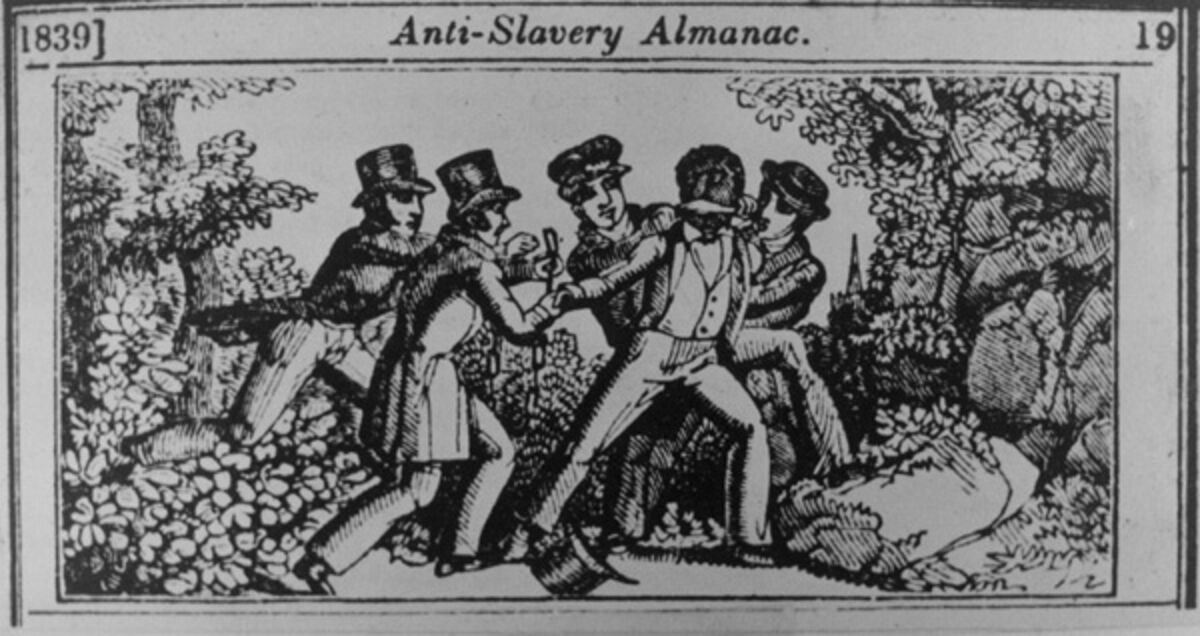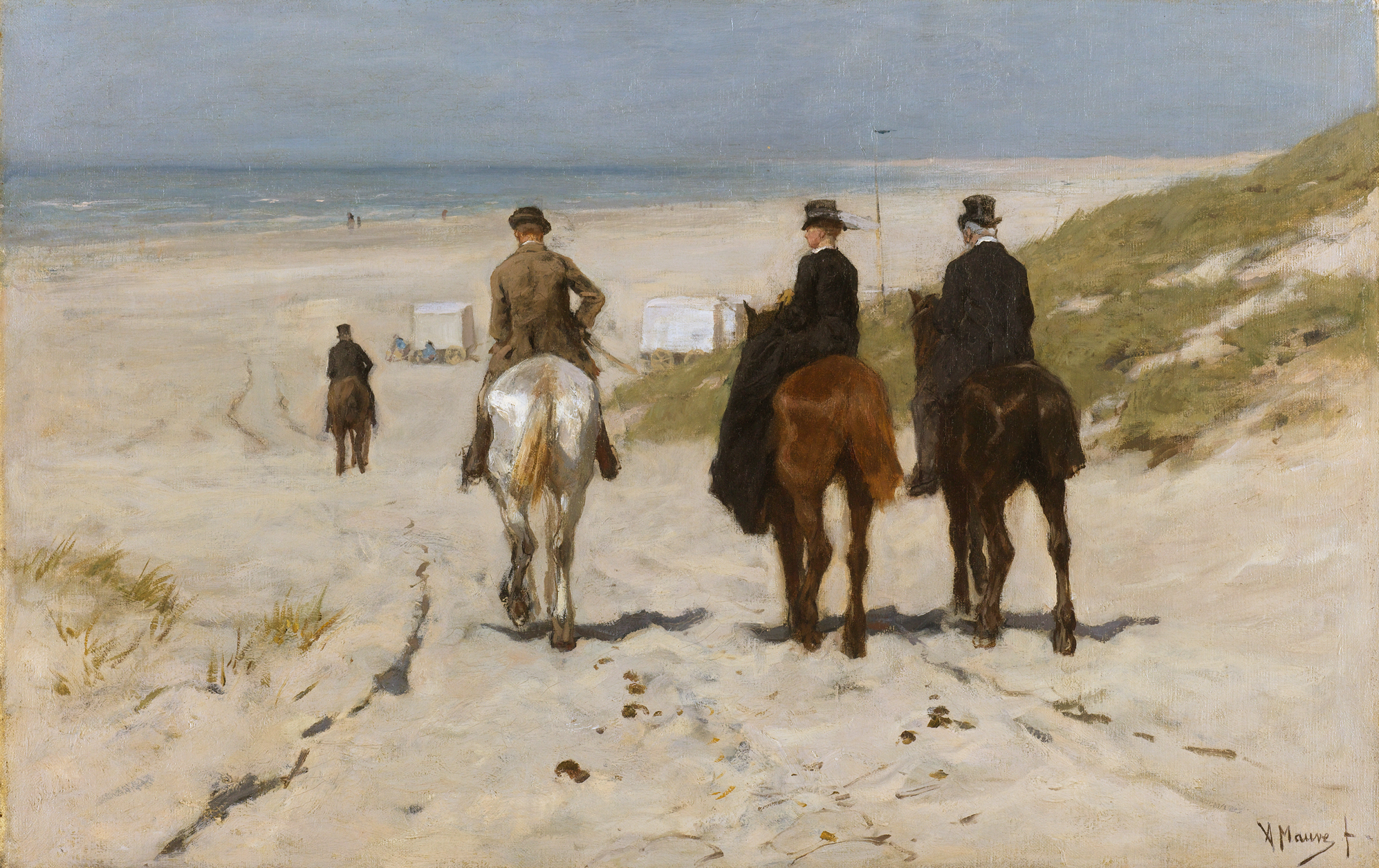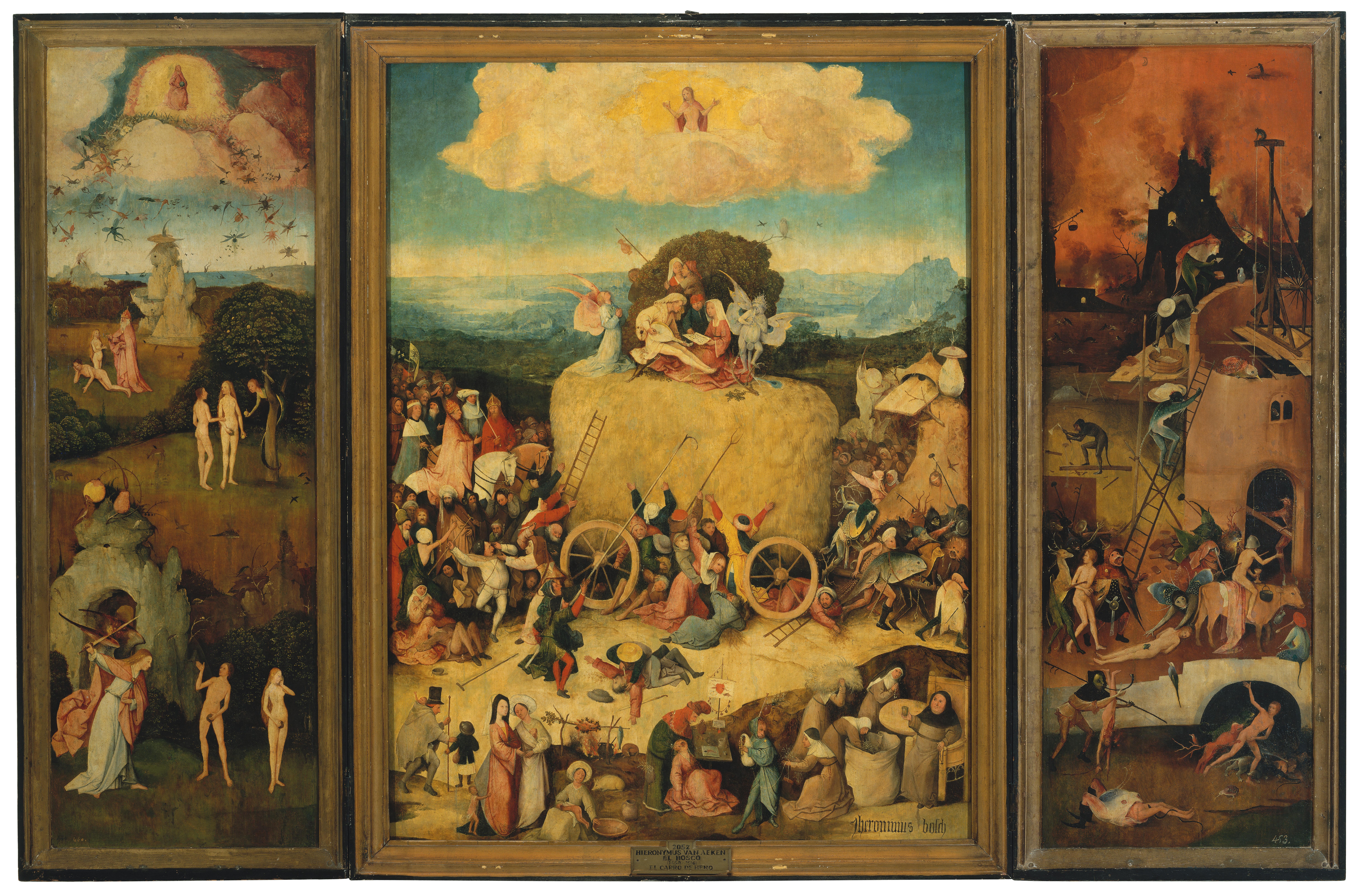The first piece comes from Goya's Los Caprichos titled "Chiton" or "Hush". This is a tiny etching only measuring 8.5 by 5.9 inches. In the etching, there is an elderly person, who is clearly very old based on the cane they hold and how hunched their back has become, and a strange figure in black who appears to be "hushing" the old man or woman. To practically anyone, this is a picture of death. They are probably right. However, delving deeper into the meaning reveals a more darker truth. The truth revealed by this painting is that death is quiet. Death makes no noise so how can you avoid it? Even if you can see death coming, how do you know for sure that death is not also creeping up behind you? Thinking in that sense, it makes this etching all the more disturbing the more you think about it.
The second piece hails from Goya's collection of "Black Paintings". This particular painting is called "Two Monks" and is 144 by 66 centimeters. While the title is not that disturbing, the faces of the men are what create concern. The man in front has a slightly distorted face on his left side with a black eye and enlarged ear. The other man in the back looks more like some freaky fantasy creature from The Lord of the Rings. It appears that the bat-like creature-man in the back is screaming into the normal man's ear, but he is not reacting. As monks are known for being very religious individuals, this piece may be a reference to the malicious nature found in religious figures back in the day. The man in front representing the wise old man we see but is deaf to the pleas from his followers. The man in the back represents the evil intent of religious figures such as intentions of gaining wealth and power. Together, the two monks represent the true nature of religious authorities.










